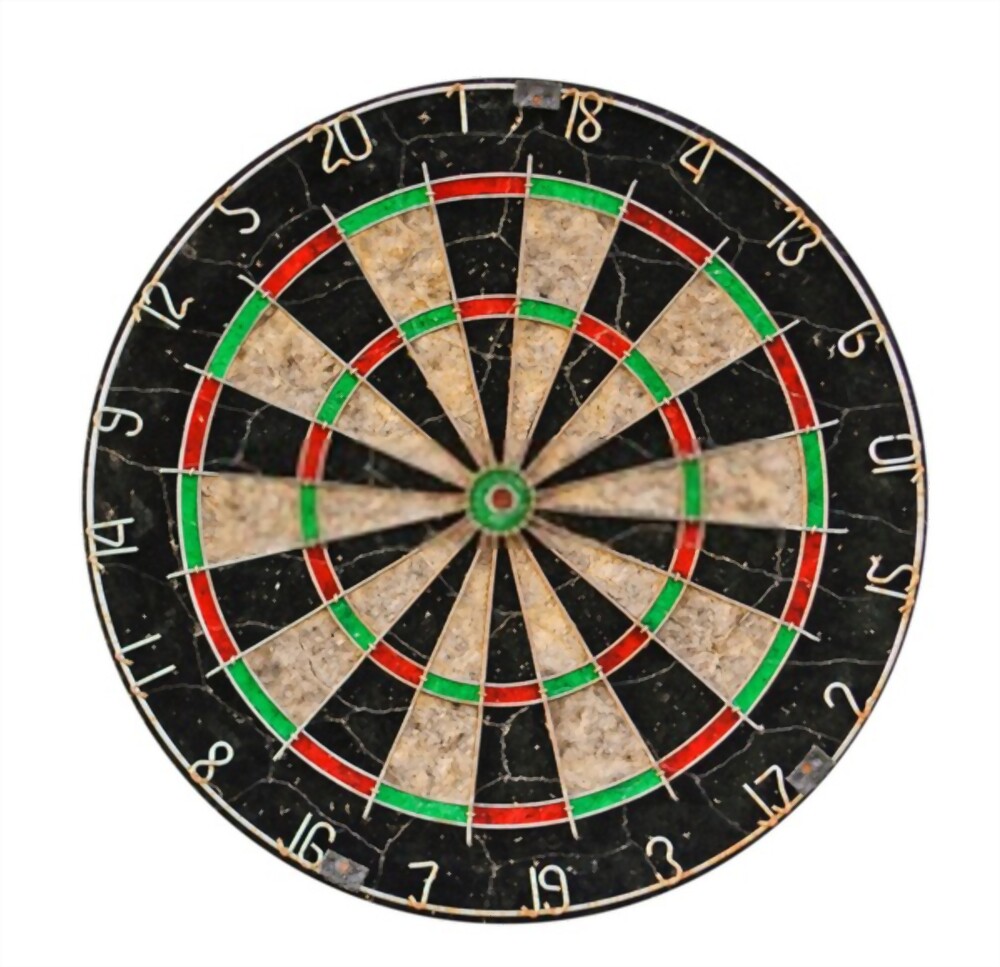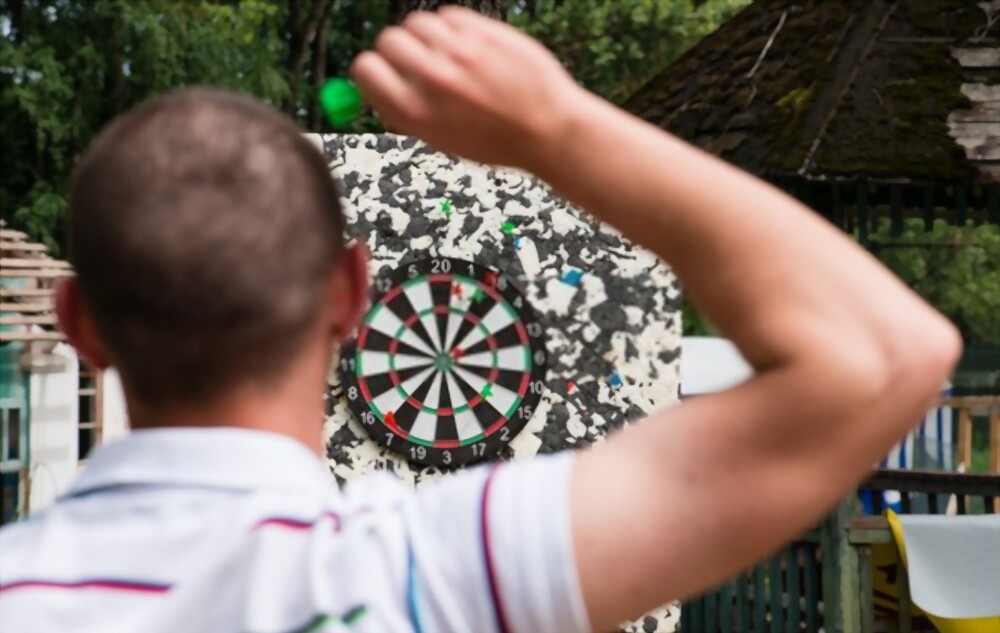In this article, we will be discussing the standard measurements and specifications of a regulation dartboard, including the size of the board, the distance from the board to the throw line, and the size of the throwing area. We will also touch on the materials used in the construction of a dartboard and the layout of the scoring sections. Whether you’re a seasoned dart player or just getting started, this guide will provide you with the information you need to set up your dartboard correctly and play the game safely.
Dartboards are required to adhere to a regulated size, with an overall diameter of 17.75 inches (451 mm), an average depth of 1.5 inches (38.1 mm), and typically weighing between 10-12 pounds (4.54-5.44 kg).
Standard Dimensions of Dartboard
A regulation dartboard is typically made from sisal fibers, which are compressed and bound together to form a circular board. The Old London Dartboard, also known as the Clock Dartboard, is a highly popular dartboard used in competitive play. Its distinct features include treble and double rings, as well as a double bullseye at the center. It is easily identifiable due to its unique design.

All dartboards have the same size standards, determined by the Darts Regulation Authority (DRA). Although they vary in design and numbers, they all adhere to the same specifications. Dartboards used for competitive play must have specific measurements. The diameter should be 17.76 inches (451 millimeters) and the depth should be 1.5 inches (38.1 millimeters). These measurements are crucial for ensuring fair play and an accurate game.
Event organizers may advertise their games as using an 18-inch dartboard, however, these boards must still adhere to the exacting standards set by the Darts Regulation Authority (DRA).
Dimensions of Dartboard Segment
A dartboard used in competitive play consists of 20 distinct segments that are marked by numbers along the outermost ring, known as the double ring. The double ring of the dartboard is located 6.69 inches (170 millimeters) from its center.
The triple ring is located between the double ring and the center of the dartboard. It measures 4.21 inches (107 millimeters) in diameter from the center of the dartboard. The width of a double ring is 0.315 inches (8 millimeters), while the width of a triple ring is also the same.
At the center of a dartboard is an arrangement of two circles with contrasting colors. The larger circle has a diameter of 1.26 inches (32 millimeters), whereas the smaller circle, termed as the bull, has a diameter of 0.5 inches (12.7 millimeters).
Related: Cornhole Court Dimensions And Components
Weight of Darts
A typical steel-tip dart typically weighs between 18 to 50 grams, making it a lightweight item that’s easy to throw and maneuver.
Position of Player and Dartboard

The bull is required to be at a precise height of 1.73 meters (5 feet 8.11 inches) from the ground. The distance from the front of the dartboard to the throw line, or oche, is 7 feet 9 1/4 inches. This measurement is critical to ensure that players are throwing from the correct distance, and it is important that this distance be measured and marked correctly before starting to play.
The throwing area, also known as the “toe line,” should be parallel to the front of the dartboard and extend at least 2 feet in front of the oche. This is the area where players must stand while throwing their darts.
How To Play Darts?
Darts is a popular game that can be played by people of all ages and skill levels. The basic rules of the game are simple, but mastering the technique takes practice and patience. Here is a general overview of how to play darts:
- Set up the dartboard: Hang the dartboard on a wall at the appropriate distance (usually 7 feet 9 1/4 inches from the front of the board to the throw line, or “oche”). Mark the throwing area, which should extend at least 2 feet in front of the oche.
- Determine the starting player: This can be done by a coin flip or by a round of “closest to the bullseye.”
- Start the game: The starting player throws three darts, with the goal of hitting as many points as possible. The inner bullseye is worth 50 points, while the outer bullseye is worth 25 points. The rest of the segments on the board are worth different point values, with the highest being the triple ring (worth three times the segment value) and the lowest being the single ring (worth the segment value).
- Take turns: Players take turns throwing three darts, trying to score as many points as possible. The player with the highest score at the end of the round wins that round.
- Play multiple rounds: The game can be played in multiple rounds, with the player who reaches a pre-determined score (such as 301 or 501) first being declared the winner.
- Keep track of scores: Each player’s score should be tracked and displayed on a scoreboard.
Darts can be played in a wide variety of variations and formats, but these basic rules provide the foundation for a fun and enjoyable game. With practice and patience, anyone can become a skilled dart player.
Related: What Are the Baseball Card Dimensions?
How Do You Throw Darts?
To throw darts, hold the dart with a relaxed grip using your thumb and first two fingers, stand with your feet parallel to the oche and your body facing the dartboard, aim by lining up the shot and aligning the dart with your dominant eye, release the dart with a smooth and consistent motion, keep your arm and hand extended in the direction of the target after releasing the dart, and practice to develop your own technique and become comfortable with the way you throw.